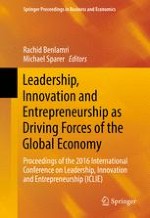2017 | OriginalPaper | Chapter
3. Living Labs (LILA): An Innovative Paradigm for Community Development—Project of “XploR” Cane for the Blind
Authors : Asim Majeed, Rehan Bhana, Anwar Ul Haq, Hanifa Shah, Mike-Lloyd Williams, Andy Till
Published in: Leadership, Innovation and Entrepreneurship as Driving Forces of the Global Economy
Publisher: Springer International Publishing
Activate our intelligent search to find suitable subject content or patents.
Select sections of text to find matching patents with Artificial Intelligence. powered by
Select sections of text to find additional relevant content using AI-assisted search. powered by
